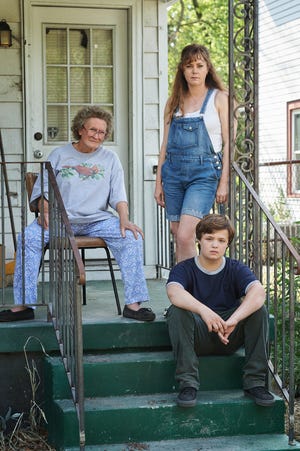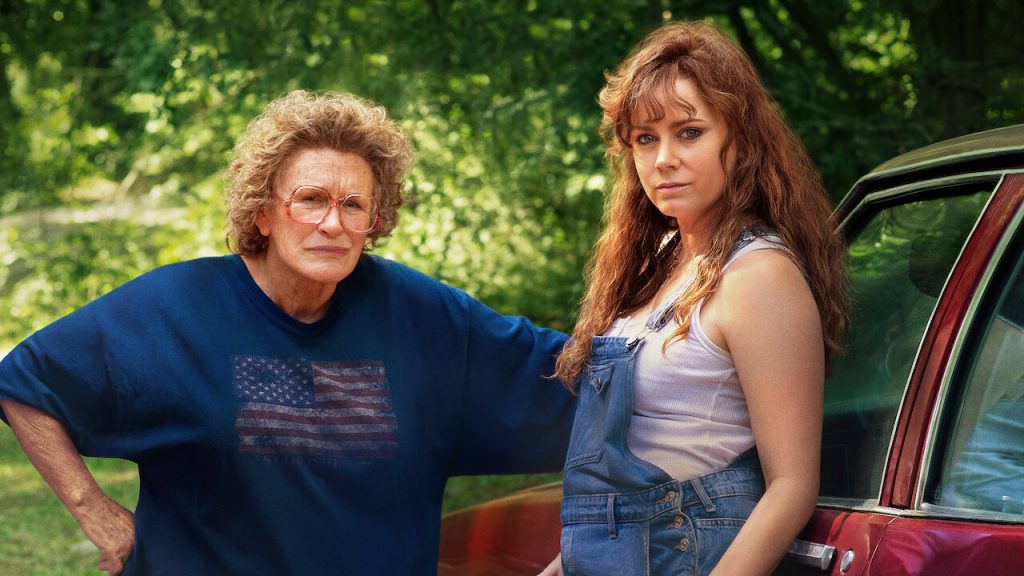
Here’s why the internet is so divided by Hillbilly Elegy
Hillbilly Elegy, one of the most critically disputed movies of 2020, is controversial due to its representation of Appalachian life and its connection to the memoir Hillbilly Elegy: a Memoir of Family and Culture In Crisis by J.D. Vance. Regardless of one’s cinematic perception of the Ron Howard film, its story and source material connect to a greater discussion of media, and its power to impact political structures and real lives.
The Perfect Storm
Vance released the critically acclaimed memoir in 2016, on the heels of Donald Trump’s election. The memoir details his life and, growing up in Jackson, Kentucky and Middletown, Ohio. Despite being a victim of both physical and emotional abuse, his mother’s drug addiction, and poverty, Vance achieves “upward mobility” by focusing on his studies, joining the military, attending Yale Law school, and successfully avoiding poverty.
In his review of the film for the Associated Press, Jake Coyle writes, “The 2016 book came at the moment many were searching for explanations for the political shift taking place across Appalachia and the Rust Belt. “Hillbilly Elegy” … emerged as one of the trendiest answers.” That surge in popularity not only landed the book on the New York Times best sellers list, but also led to the creation of the film.
According to Karen Nikos-Rose from University of California Davis, some readers ascribed to the book’s “authoritative text enigmatic working-class whites,” confirming a belief that those stuck within the cycle of generational poverty were stuck due to character flaws, rather than systematic exploitation. Others felt the book was a massive generalization of Appalachian culture and ignored the systemic issues and challenges faced by this region. Per Piper Hansen for The State Press, the book “fails to recognize the cultural diversity of Appalachia, a region that spans 13 states, as well as a history of racial and economic inequality.”
Feedback for the Netflix Original adaptation of the memoir is heavily divided. Critic responses are largely negative, perceiving the movie as meaningless, reductive and damaging to perceptions of Appalachia. Rotten Tomatoes, a critic–driven rating system, gave the movie a 26% rating. Average viewer reviews have been more positive. IMDb, a rating system open to users, gave it a 6.8/10. The question remains, does Hillbilly Elegy fairly represent the Appalachian community? Is it meant to?
Hillbilly Elegy is a dramatization of Vance’s life. Assuming the movie accurately represents his life, some believe it merely tells an individual’s story.
According to an anonymous survey, one Appalachian resident individual noted, “It definitely doesn’t portray Appalachia in a good light, but that wasn’t the intention. This is the true story of one person’s struggle and how they overcame it.”
Many responses, especially from those local to the area, conveyed this idea: Although the film isn’t reflective of every family within Appalachia, it is a tale of relatable struggle.
Why does It Matter?
Unfortunately, even media backed by truth can be dangerous. Due to a lack of Appalachian representation, each additional body of work that displays the region in this light reinforces pre-existing stereotypes. Vance’s story isn’t invalid, but it helps perpetuate a stereotypical narrative that plagues Appalachian communities. Without further investigation, the most easily accessible media representations may solidify stereotypes and distortions, which now inform negative or inaccurate perspectives on a group of people.
Furthermore, stereotypes create lasting damage to those they depict. Stereotype Threat is one example of said damages, involving “the risk of confirming negative stereotypes about an individual’s racial, ethnic, gender, or cultural group,.” according to the Center for Teaching & Learning at the University of Colorado Boulder. The more prevalent the stereotypes associated with Appalachia, the greater risk that some will conform to said stereotypes.
“This region is huge, and there’s all kinds of people here; people of different classes, races, ethnicities, genders, etc.,” says Dr. Anna Rachel Terman, professor of sociology of Appalachia, diversity in Appalachia and women in Appalachia at Ohio University. “Distilling our understanding of the region down to one person’s story is problematic because that larger diversity is not reflected.”
Unfortunately, preventing people from perceiving Hillbilly Elegy as an informative text on the Appalachian region isn’t as easy as trying to get rid of it.
“I don’t want to silence people who have had stories similar to this, that is their story and their experience, and it deserves to be told, just as much as anyone else’s,.” says Dr. Tiffany Arnold, professor of Appalachian studies at Ohio University. “If we do that, we’re engaging in the same thing that feel like J.D. Vance is doing to us by canceling out the regular people. I want to give other people the opportunities to tell their stories.”
Although the movie and the memoir are undoubtedly very different pieces of media, they are inseparable in their impact on the greater discussion. The divisive nature of the book combined with its relation to Trump’s election and an increase in media awareness of the opioid epidemic, created the perfect storm, putting Vance and his memoir in the news for the entire four years leading up to the creation of the movie.
Due to that media coverage, it is hard to separate the message contained in the book from the movie’s graphic storytelling. The graphic and potentially one-dimensional nature of the movie bolsters the message contained within Vance’s book as well as contributes to a history of Appalachian misrepresentation within film.
“Hillbilly Elegy doesn’t show the positive side of Appalachia that my aunt and I know, because that wouldn’t serve the story’s purposes,” says Cassie Chambers Armstrong, Appalachian author and writer. “The film and book need Appalachia to be poor, broken, and dirty, because they depend on us believing that the mountains are somewhere we want Vance to escape.”
How can Media Grow?
How is representation of the Appalachian region going to change? Perspective. Finding ways to increase the presence of diverse stories within the representation of Appalachia will decrease the potential damage caused by not only Hillbilly Elegy but by the collection of perpetuated stereotypes associated with this region.
Vance creates a central message within the book that places Appalachian poverty as a result of traits such as laziness.
“That’s called the culture of poverty mentality. It basically ignores systemic and institutional reasons for people struggling with poverty and it makes poverty a character flaw,” Dr. Arnold says. “If you do that, then it’s really easy for other people or to say you know that’s their problem because there’s something wrong with them. Whereas if people were to accept the fact that the reason people are struggling in this region is because of a history of exploitation by extractive industry, by the government, by the media, then you have to take responsibility for it.“


